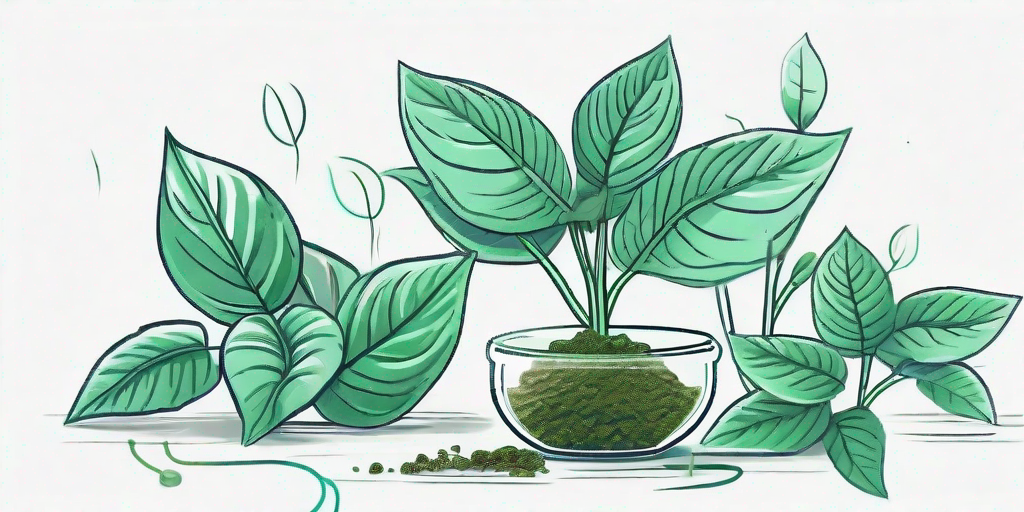
Welcome, green-thumbed enthusiasts and curious cat gardeners alike! Today, we're diving into the world of Kratom, a tropical tree native to Southeast Asia. Known for its medicinal properties, Kratom has been a subject of intrigue and interest among gardening communities worldwide. But how does one go about growing this exotic plant? Fear not, for we're about to unearth the secrets of growing Kratom right in your backyard. So, grab your gardening gloves, and let's get digging!
The Basics of Kratom
Before we delve into the nitty-gritty of growing Kratom, it's crucial to understand what we're dealing with. Kratom, scientifically known as Mitragyna speciosa, is a tropical evergreen tree belonging to the coffee family. Yes, you read that right, coffee! So, if you're a caffeine lover, you already have one reason to grow Kratom.
Native to Southeast Asia, Kratom thrives in hot, humid environments. It's known for its large, glossy leaves and erect, yellow flowers. But it's not just a pretty face. Kratom leaves have been used in traditional medicine for centuries, thanks to their analgesic and stimulant properties. Now, who wouldn't want a natural pharmacy in their backyard?
Getting Started: Choosing Your Kratom
Just like choosing a pet, choosing your Kratom plant is a serious business. There are several strains of Kratom, each with its unique characteristics and effects. The most popular ones are Red Vein, White Vein, and Green Vein Kratom. Your choice will depend on your personal preferences and the specific effects you're looking for.
Red Vein Kratom, for instance, is known for its calming effects, while White Vein Kratom is more stimulating. Green Vein Kratom, on the other hand, offers a balance between the two. So, whether you're looking for a chill companion or a pick-me-up buddy, there's a Kratom strain for you.
Planting Your Kratom
Seeds vs. Cuttings
There are two ways to start your Kratom journey: seeds or cuttings. Kratom seeds are tiny and need to be fresh to germinate, which can be a challenge given the long distances they often travel. If you're up for a challenge, by all means, go for it! Just remember, patience is a virtue when growing Kratom from seeds.
On the other hand, cuttings can be a more reliable option. They're essentially a piece of the plant that you plant in the soil. With the right conditions, the cutting will develop roots and grow into a new Kratom tree. It's like cloning, but for plants. How cool is that?
Soil Preparation
Now, let's talk about soil. Kratom loves rich, fertile soil with good drainage. It's not a fan of waterlogged conditions, so make sure your soil is well-draining. You can improve your soil's drainage by adding organic matter such as compost or well-rotted manure. Your Kratom plant will thank you for it.
As for the pH, Kratom prefers slightly acidic to neutral soil (pH 5.5-7.0). You can test your soil's pH with a soil test kit, available at most garden centers. If your soil is too alkaline, you can lower the pH by adding sulfur or peat moss. If it's too acidic, you can raise the pH by adding lime. It's all about balance, folks!
Caring for Your Kratom
Watering
When it comes to watering, Kratom likes to play hard to get. It enjoys moist soil but doesn't like to be waterlogged. The key is to water deeply but infrequently. A good rule of thumb is to water when the top inch of soil feels dry to the touch. And remember, it's better to underwater than overwater. Your Kratom plant is not a fish, after all.
Feeding
Kratom is a hungry plant and needs regular feeding to thrive. A balanced, slow-release fertilizer is a good choice. You can also supplement with organic matter such as compost or well-rotted manure. Just remember, too much of a good thing can be harmful. Over-fertilizing can lead to nutrient burn, so follow the fertilizer instructions carefully.
Harvesting Your Kratom
After all your hard work, it's time for the grand finale: harvesting. Kratom leaves can be harvested any time once they're mature, but they're most potent in late summer and early fall. To harvest, simply pluck the leaves from the tree. You can use them fresh or dry them for later use. And voila, you've got your very own supply of Kratom!
Just remember, with great power comes great responsibility. Kratom should be used responsibly and in moderation. After all, it's not just about growing Kratom, it's about growing responsibly.
FAQs
- Is it legal to grow Kratom?
Legality varies by country and state. In some places, it's perfectly legal to grow and use Kratom. In others, it's not. Always check your local laws before growing Kratom.
- How long does it take for Kratom to grow?
Kratom is a slow grower. From seed or cutting, it can take several years to reach maturity. But as they say, good things come to those who wait!
- Can I grow Kratom indoors?
Yes, you can! In fact, growing Kratom indoors can be a great way to control the growing conditions. Just make sure it gets plenty of light, warmth, and humidity.
And there you have it, folks! The secrets of growing Kratom, unveiled. So, are you ready to embark on your Kratom gardening journey? Remember, every great gardener was once a beginner. So, don't be afraid to get your hands dirty and make mistakes. After all, that's how we grow, both as gardeners and as people. Happy gardening!















